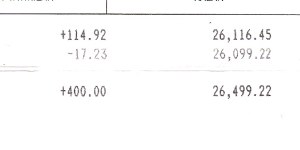  The failure to appreciate the varying relationship between spot and future prices and the resulting erroneous notions concerning hedging have centered about the idea of a "normal spread," that is, a relationship between spot and future prices which is believed to show itself with a high degree of regularity. It is obvious that if any definite spread between the spot and the futures price does appear with great frequency and permanence the hedger is relatively safe in assuming that the two prices will fluctuate in unison, and may place his hedge with the expectation of correspondingly complete protection from adverse changes in price. The normal spread has been assumed, however, without a careful analysis of the assumptions that would be necessary to make it a useful concept. A presentation of the assumptions which are necessary to give meaning to the idea will show the fallacy of the notion of complete insurance against price changes and at the same time furnish a background against which the actual happenings and the resultant possibilities of avoiding market risk by hedging may be shown more clearly.
 Coincident fluctuations in any two markets can be expected only under one of two sets of circumstances. In the first place, the two markets might conceivably remain in line with one another because both were controlled by the same forces, or second, prices in one market might exercise a controlling influence over prices in the other. In practice neither of these things ever happens completely in connection with the spot and futures markets of the produce trades. To show what does happen, it is necessary first to consider the hypothetical conditions under which a perfect hedge could be effected; second, to analyze the ways in which the actual marketing situation diverges from these hypothetical conditions; and third, to survey the statistical evidence concerning the frequency of occurrence of the conditions under which a perfect hedge can be secured. The wheat trade furnishes a convenient case for both the assumed and the actual illustrations.
|